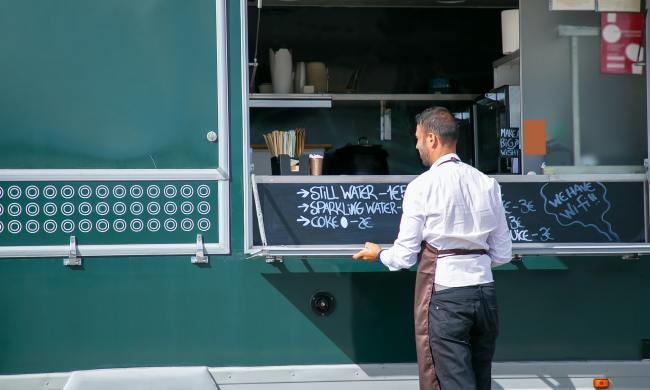If you’re considering opening your own restaurant, you might be an experienced restaurateur or just starting out for the first time. There is much to consider when starting any small business, but with a restaurant, the process can be more complex due to how many details there are to take care of. It’s important to follow these steps to opening a restaurant before you settle on a location and open your doors to the public.

Steps to opening a restaurant
Study your market
The restaurant business is often finicky and fluctuates with the seasons and economic climate. So before even considering opening a brand-new restaurant or a new location of an existing chain, take time to carefully review the market, surrounding area, and target clientele.
Study comparable restaurants in your town. Read restaurant reviews to get a sense of consumer preferences. Consider your competition and similar establishments. Survey foot and auto traffic at different locations. When considering which practices to emulate, look at restaurant models that appear to work, and those that aren’t as successful.

Create your brand
With this data and knowledge in hand about the market you’re entering, you will be better equipped to tailor your brand to reach the most customers. Your restaurant brand is its overall persona and public face, and encompasses not only the menu, but also the vision and feel of the place.
Your brand is an extension of the target customer. If that customer base loves meat dishes, the restaurant name, decor, menu, staff, and general ambiance should all be tailored to appeal to that segment of customers. They will respond to and remember your restaurant if your brand resonates with their tastes, so the branding should match their preferences.
Brand specifics include your restaurant name and motto, logo, color scheme, menu design, as well as the source of ingredients, your restaurant’s mission and value proposition, and personality. Brand truly ‘is’ the restaurant and affects all areas of operations.
Develop a business plan
This essential step involves your implementation strategy, budget, financials, and overall business plan. And no aspect of your restaurant’s operation is possible to execute successfully without a clearly planned budget and financial projection.
Involve an accountant or financial planner at this stage to ensure you have captured all expense line items in your business strategy–rent, salaries, operating permits, capital equipment, ordering software, weekly or daily food and product orders, marketing, website, and so on.
Your business plan should also include your marketing strategy for the year and how you plan to reach your customers at different times.

Plan marketing
The first marketing step is to create your website and set up a social media presence–on Facebook to encourage interaction and provide contact information and images, and Instagram to share photography of entrees and entice new customers.
Then consider how you will reach potential customers. Engage a marketing consultant if you get stuck. They might suggest printing flyers to distribute in the community and announce your new restaurant.
You may want to distribute coupons with the flyers, or online coupons on Facebook and your website to get people in the door the first time. Send notices out to food columnists as well at local publications to generate buzz.
Some successful restaurants sponsor local children’s sports teams to get their name out there, co-host events such as charity drives, or invite spectators for television sporting events.

Place orders
You will need a host of new equipment in your restaurant to keep things running smoothly, even if you were able to lease a location that already has a full kitchen and dining room. This is also the time to set up relationships with good vendors–you will depend on them weekly for timely delivery. You also need to create logins to online ordering systems and set up a food and supply ordering schedule.

Hire and train staff
Hiring can go more smoothly if you start your marketing efforts early, even before doors open. In some markets, good wait staff are challenging to hire, and the same goes for kitchen staff. Consider what benefits you can offer to encourage employees to stay longer with less turnover.
Good training is essential to ensure that your staff lives and breathes your brand and provides excellent service to customers. Devote considerable time to training before your grand opening, and each day before doors open.

Focus on the food
In the end, good food will keep customers coming back. Service comes a close second. From the start, pay close attention to your suppliers to make sure they send you the freshest produce and other food products. Work closely with your cooks and keep reviewing the menu to see what resonates with customers and what doesn’t sell well.
Feed your staff and get their feedback on the dishes, making adjustments as needed. Seek out customer feedback. Vary your menu with the season and switch out a few dishes from time to time.
These basic steps will help you get your restaurant up and running. Study the industry as well and consult online resources and experts to ensure you have the latest data and best practices.



